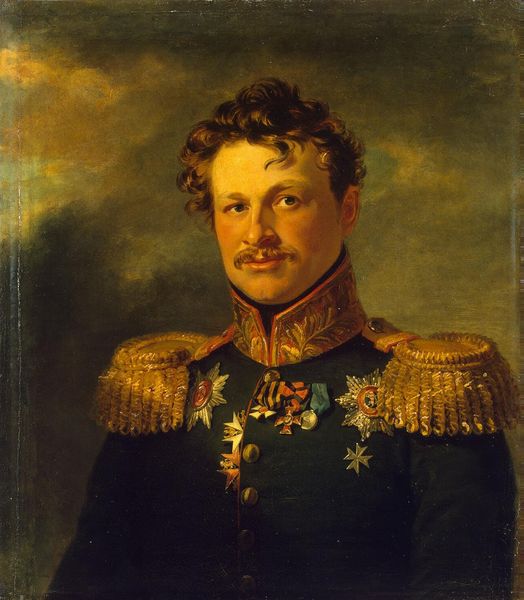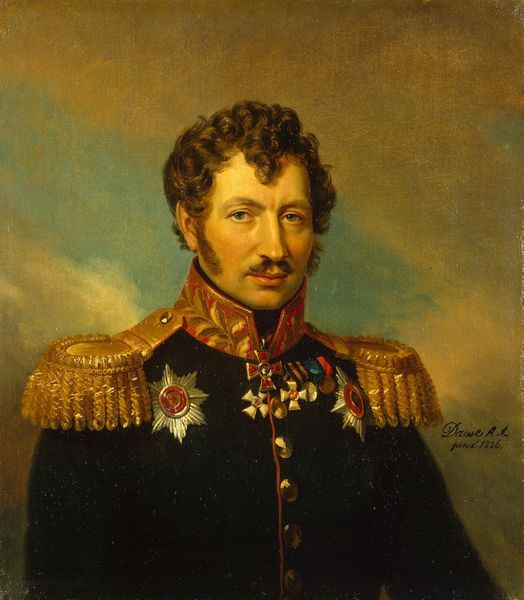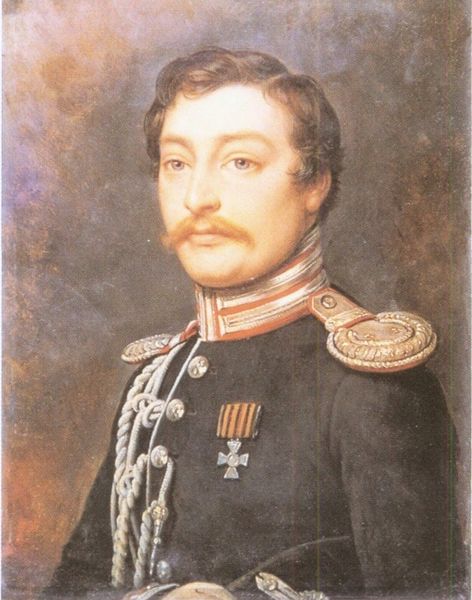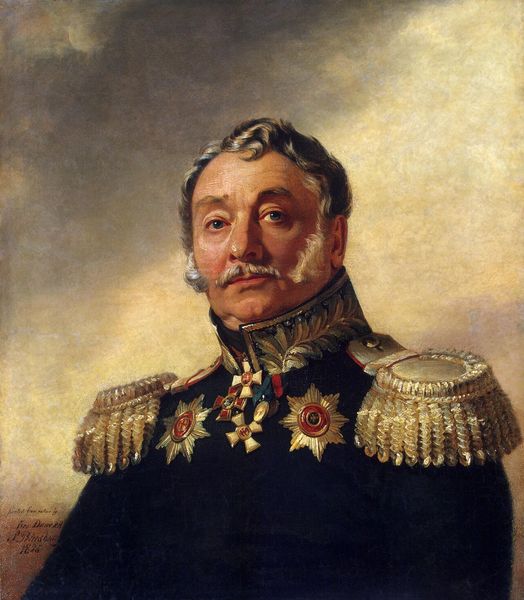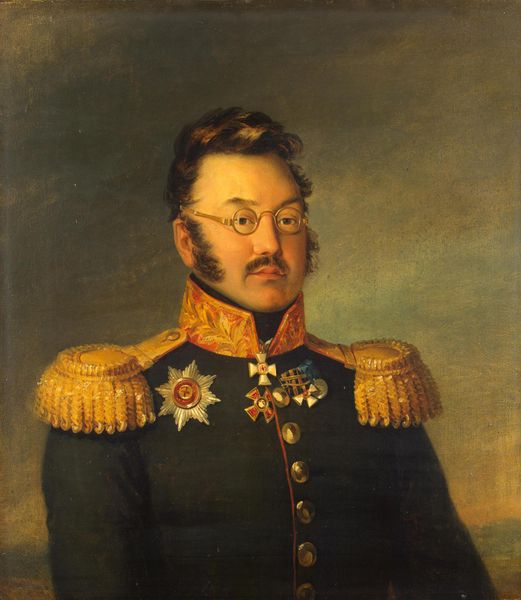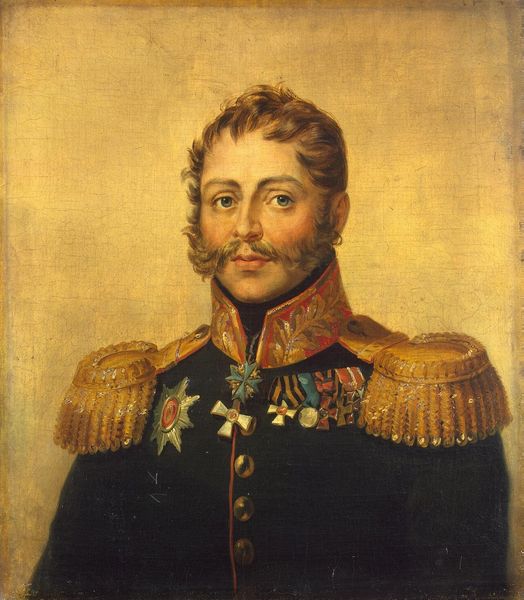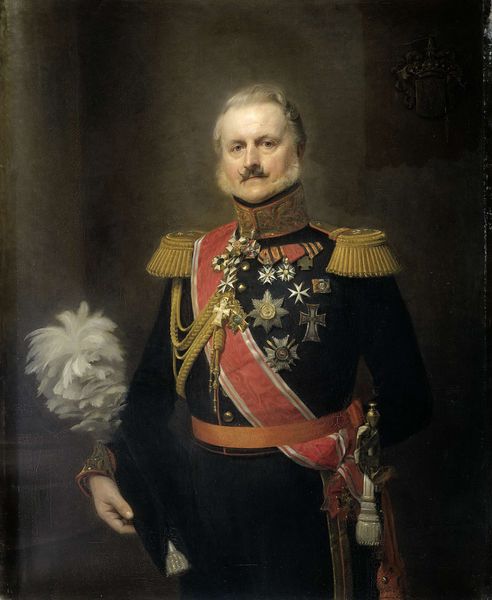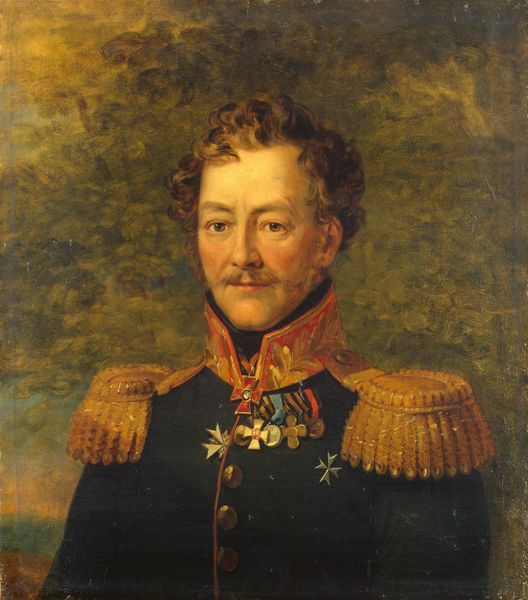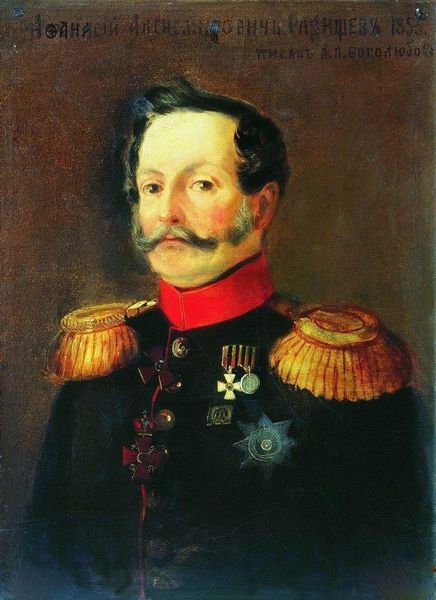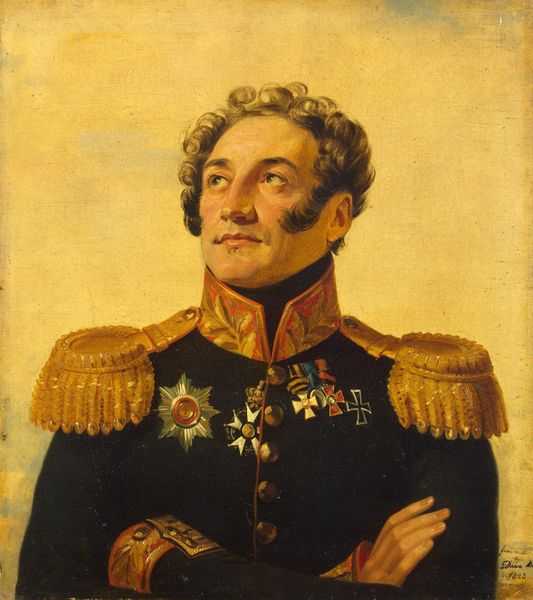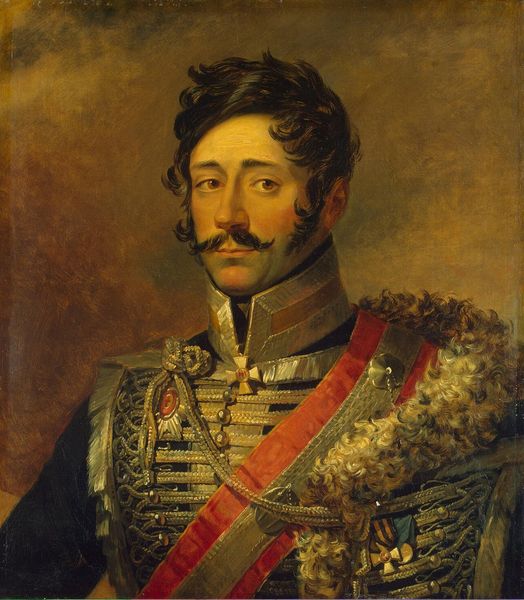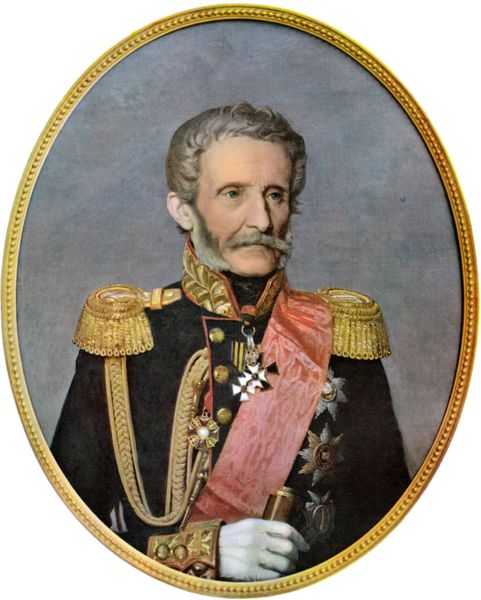
oil-paint
#
portrait
#
oil-paint
#
figuration
#
oil painting
#
romanticism
#
history-painting
#
academic-art
#
portrait art
Copyright: Public domain
Curator: Welcome! Today, we're looking at George Dawe's 1829 oil portrait of Pavel Petrovitch von der Pahlen. It's part of the collection here at the Pushkin Museum. Editor: My first thought is how opulent it seems, even with the dark, muted tones. The gold detailing on the epaulettes and the elaborate medals really catch the light. I wonder how those elements were constructed; I see paint cracking all over this piece! Curator: Dawe was known for his prolific output of portraits, particularly of Russian military figures after the Napoleonic Wars. These images, of which this one is part of, served a key role in establishing Russian national identity and reinforcing the authority of the Tsarist regime. Editor: Absolutely. The meticulous brushwork depicting Pahlen's uniform screams imperial power, yet look closely at his face. There is that careful glazing, those tiny dots of material. One can clearly observe signs of his age, as well as get an intimation of who he was, which softens the overall effect. Curator: Exactly! Pahlen had a long and storied military career, which included a prominent role in the Napoleonic Wars and later in the Decembrist Revolt, though he ultimately remained loyal to Nicholas I. It's interesting to note the political balancing act the artist had to navigate in presenting this figure. The painter certainly seemed concerned with achieving high societal status. Editor: The political is personal. I'd bet those gold embroideries were painstaking work, likely farmed out to many anonymous artisans in a workshop. Considering the social standing indicated by the medals, ribbon and cross around his neck, those could be produced only for someone so elevated. It reveals so much about material networks within the Russian court at this moment! Curator: Yes, considering all this, Dawe really captures a specific time and set of cultural anxieties. The artwork certainly functions as a historical artifact. Editor: And all these details! We must appreciate the social organization and material investment needed to create the portrait in the first place, too. What stories do the artist’s choices tell us, not only about the subject but the systems in place that created this cultural image of aristocracy?
Comments
No comments
Be the first to comment and join the conversation on the ultimate creative platform.
